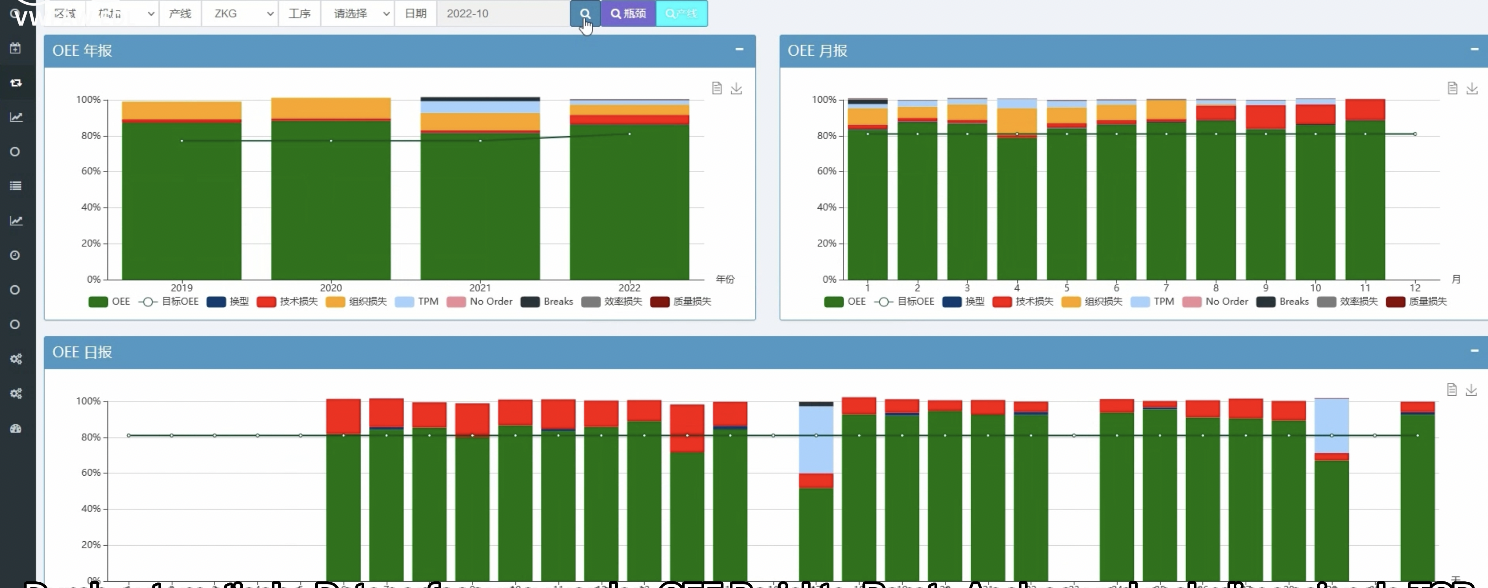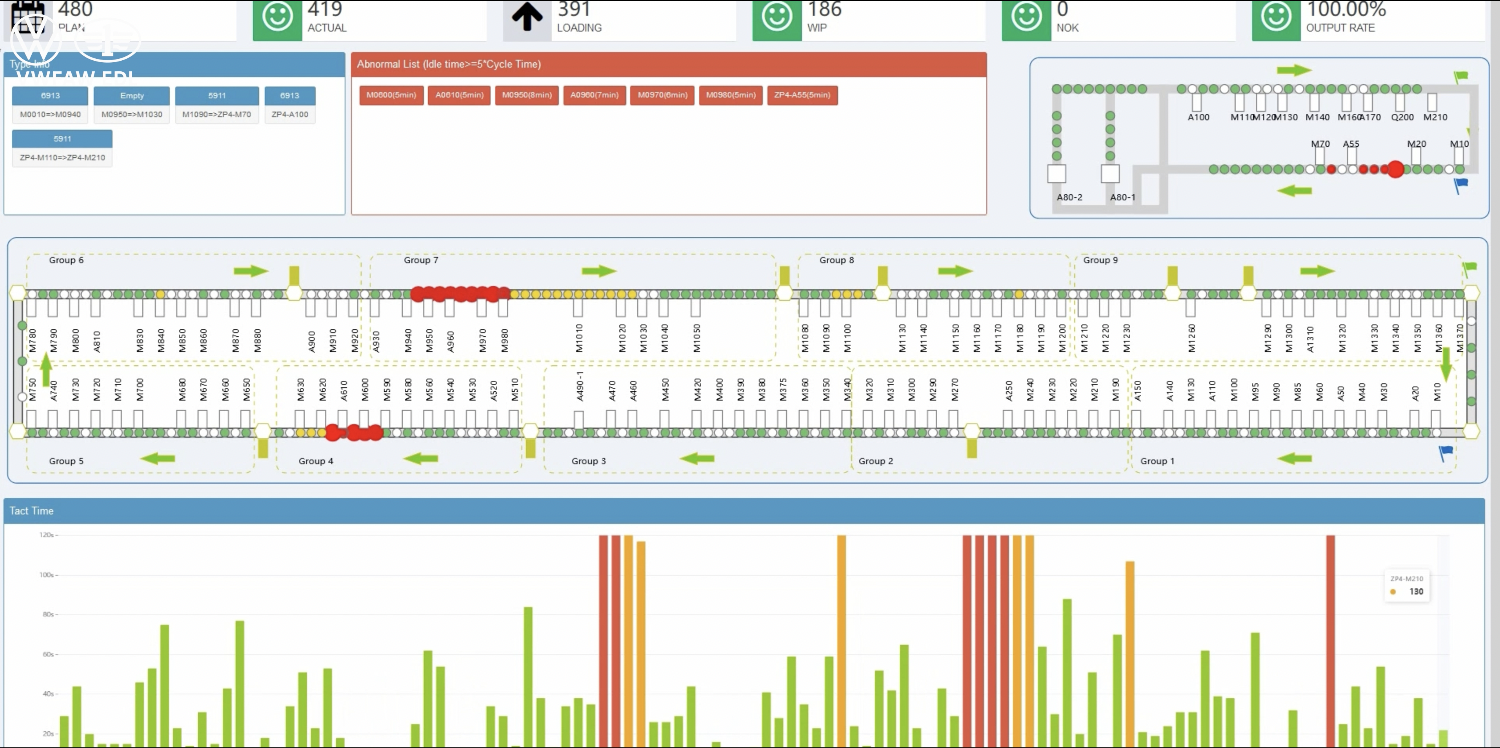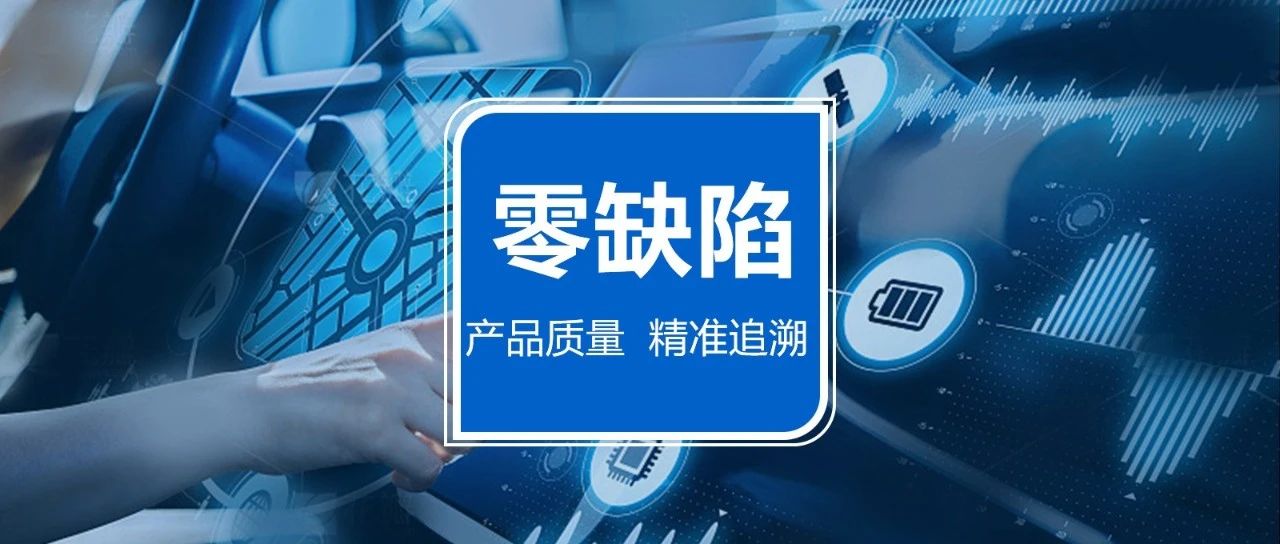Equipment efficiency directly impacts an enterprise’s productivity and economic benefits. By enhancing equipment utilization rates, enterprises can significantly boost production efficiency and reduce resource waste. OEE (Overall Equipment Effectiveness) is a crucial tool for measuring comprehensive equipment efficiency, considering availability, performance efficiency, and production quality. Lean management helps enterprises achieve efficient operations through continuous improvement and waste elimination. This article will explore strategies to enhance equipment efficiency and utilization rates, helping enterprises optimize equipment use and reduce production costs.

Basic Concepts of Equipment Efficiency
What is OEE?
Definition of OEE
OEE (Overall Equipment Effectiveness) is an essential indicator for measuring production equipment efficiency. OEE evaluates the availability, performance efficiency, and production quality of equipment, comprehensively reflecting its actual production capacity. The formula for OEE is: OEE = Availability × Performance Efficiency × Quality Rate.

Three Main Components of OEE
1. Availability: The ratio of actual operating time to planned operating time. Availability reflects downtime and failure time. Improving availability requires reducing equipment failures and downtime.
2. Performance Efficiency: The ratio of actual production speed to theoretical production speed. Performance efficiency reflects the operational speed and production efficiency of the equipment. Improving performance efficiency requires optimizing production processes and reducing speed losses.
3. Quality Rate: The ratio of the number of qualified products to the total production quantity. The quality rate reflects the level of product quality. Improving the quality rate requires strengthening quality control and reducing scrap rates.
Basic Principles of Lean Management
Definition of Lean Management
Lean management is a management approach focused on eliminating waste and continuous improvement. Lean management optimizes production processes and improves resource utilization, helping enterprises achieve efficient operations. Lean management emphasizes customer demand orientation, aiming for maximum value and minimal waste.
Five Principles of Lean Management
1. Specify Value: Identify the products and services that customers genuinely need and define the value accordingly. Enterprises need to define value from the customer’s perspective.
2. Value Stream Analysis: Analyze the entire production process from raw materials to final products, identifying and eliminating non-value-added activities. Value stream analysis helps enterprises discover waste and bottlenecks, improving production efficiency.
3. Create Flow: Optimize production processes to ensure seamless connection between each stage, achieving continuous production. Continuous flow reduces waiting time and inventory, improving production efficiency.
4. Pull Production: Produce based on customer demand, avoiding overproduction and inventory buildup. Pull production reduces inventory costs and improves capital turnover.
5. Pursue Perfection: Continuously improve, constantly optimizing production processes and management methods, aiming for excellent performance. Enterprises need to establish a continuous improvement mechanism, encouraging employees to participate in improvement activities.
By understanding the basic concepts of OEE and lean management, enterprises can better evaluate equipment efficiency and formulate effective improvement strategies.
Strategies for Improving Equipment Efficiency
Reducing Downtime
Preventive Maintenance
Preventive maintenance is a critical strategy for reducing equipment downtime. Regular inspection and maintenance can identify potential issues early, preventing equipment failures. Enterprises can use data analysis and predictive technology to create detailed maintenance plans.

Quick Changeover Techniques
Quick changeover techniques can significantly reduce equipment downtime. By optimizing the changeover process and using quick changeover tools, enterprises can complete changeovers in the shortest possible time.
Increasing Production Efficiency
Standardized Operations
Standardized operations are key to increasing production efficiency. By establishing detailed operating procedures and standards, enterprises can ensure that each operator follows consistent standards. Standardized operations reduce operational errors and increase production efficiency. Enterprises need to regularly review and update operating standards to ensure they meet production needs.
Employee Training
Employee training is essential for increasing production efficiency. Systematic training helps employees master equipment operation and maintenance skills, reducing operational errors. Enterprises can regularly organize training courses to enhance employees’ professional skills.
Improving Product Quality
Quality Control Methods
Quality control methods are critical for improving product quality. By implementing strict quality control measures, enterprises can reduce scrap rates and increase product qualification rates. Enterprises can use methods such as Statistical Process Control (SPC) to monitor quality issues in real time during production. Quality control methods not only improve product quality but also reduce production costs.
Continuous Improvement
Continuous improvement is an essential strategy for improving product quality. By constantly optimizing production processes and management methods, enterprises can achieve excellent performance. Enterprises need to establish a continuous improvement mechanism, encouraging employees to participate in improvement activities. A large manufacturing enterprise significantly improved equipment utilization and product quality through continuous improvement.
Application of Lean Management in Improving Equipment Efficiency
Identifying Waste
Value stream mapping helps enterprises identify waste in production processes. By drawing a value stream map, enterprises can clearly see resource consumption and time allocation at each stage. The development of the Toyota Production System proves the effectiveness of value stream mapping in identifying waste. Enterprises can use value stream mapping to find non-value-added activities, reduce resource waste, and improve equipment efficiency.
Optimizing Processes
Process optimization is a key step in value stream mapping. Enterprises can redesign production processes based on value stream analysis results, eliminating bottlenecks and increasing production efficiency. Toyota Motor Corporation achieved efficient production management through process optimization. Enterprises can learn from Toyota’s experience to optimize equipment utilization, reduce equipment failure rates, and increase utilization rates.
Digital Kanban Management
Definition of Digital Kanban Management
Digital Kanban management is a production management method based on electronic screens or software systems, using real-time digital signals to transmit production information and ensure smooth production processes. In modern production systems, digital Kanban management is an essential tool for achieving efficient production.

Advantages of Digital Kanban
1. Real-time Updates: Digital Kanban can update production data in real time, ensuring the accuracy and timeliness of information.
2. Easy Integration: Digital Kanban can integrate with ERP (Enterprise Resource Planning), MES (Manufacturing Execution System), and other systems, automatically obtaining and displaying relevant data.
3. Flexibility: Digital Kanban can dynamically adjust display content and format as needed, offering greater flexibility and diversity.
4. Remote Monitoring: Managers can remotely monitor the production site through the network, promptly identifying and resolving issues.
5. Data Analysis: Digital Kanban can record and store historical data, facilitating data analysis and decision support.
Implementation Steps of Digital Kanban Management
1. Determine Requirements: Enterprises need to determine the number and location of digital Kanbans based on production needs.
2. Design Kanban: Enterprises need to design the content and format of digital Kanbans, ensuring accurate information transmission.
3. Install Kanban: Enterprises need to install digital Kanbans at the production site, ensuring employees can timely access production information.
4. Train Employees: Enterprises need to train employees on digital Kanban management, ensuring they can correctly use Kanbans.
5. Continuous Improvement: Enterprises need to regularly check the usage of Kanbans, making timely adjustments and improvements.
By implementing digital Kanban management, enterprises can increase production efficiency, reduce inventory buildup, and improve equipment utilization.
Case Study
A large manufacturing enterprise significantly improved equipment efficiency by implementing the LinkedData Digital LPS (Lean Production System). The enterprise first carried out improvement plans for enhancing equipment efficiency, focusing on reducing downtime and increasing production efficiency. Through preventive maintenance and quick changeover techniques, the enterprise reduced equipment failures and downtime. Standardized operations and employee training further improved production efficiency. Ultimately, the enterprise’s OEE increased from 65% to 85%, significantly enhancing equipment utilization.
In summary, to optimize equipment efficiency, enterprises need to reduce downtime, increase production efficiency, and improve product quality. OEE and lean management play crucial roles in improving equipment utilization and production efficiency. Enterprises should regularly maintain equipment, adopt quick changeover techniques, implement standardized operations and employee training, ensuring continuous and efficient production processes.
OEE and lean management help enterprises identify and eliminate waste in production processes, optimizing resource utilization. Through value stream mapping and Kanban management, enterprises can achieve efficient operations and improve comprehensive equipment efficiency. Enterprises need to actively apply these strategies, continuously improving production processes to increase equipment utilization and production efficiency.
Encouraging enterprises to apply these strategies in actual work will enhance equipment efficiency and productivity. Through scientific management and correct decision-making, enterprises can achieve a win-win effect of business growth and cost control.
Start Now! Improve Order Delivery Efficiency Immediately!
Contact us and explore order delivery efficiency improvement with LinkedData digital transformation experts.
Request a Demo
 0510-8521 1230
0510-8521 1230



